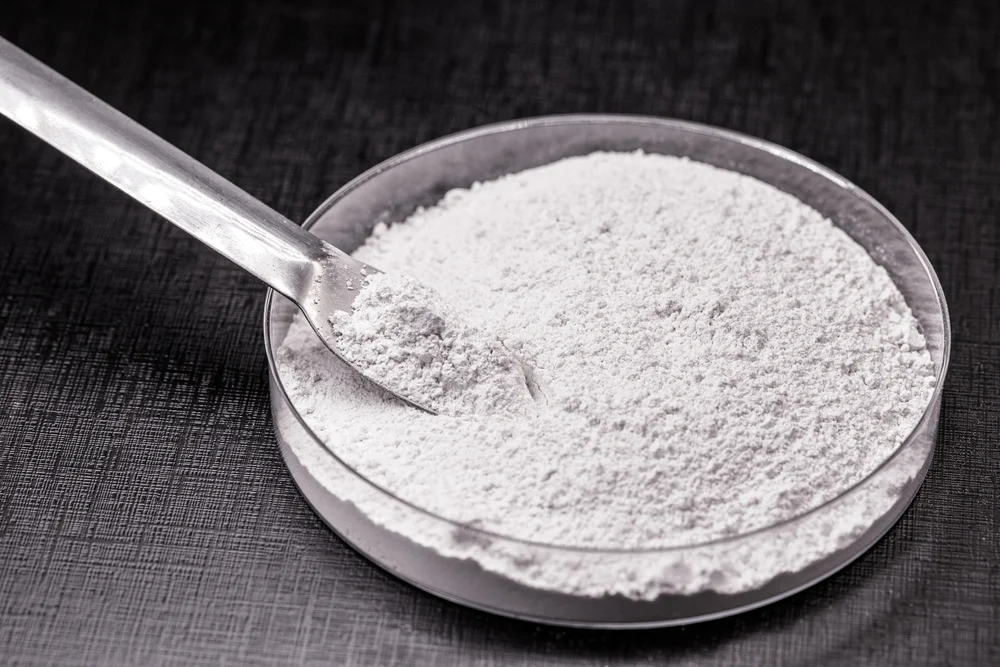Coated Calcium Carbonate
Coated calcium carbonate is calcium carbonate covered with a layer of stearic acid. Stearic acid is a fatty acid that can be used as a surfactant. This way, it increases and enhances the physical and chemical properties of the calcium carbonate.

The Sale of Coated Calcium Carbonate
With wide access to the chain of supply and distribution of coated calcium carbonate, Karun Kara Tom Company is capable of providing you with this mineral substance from reliable and valid sources under competitive conditions, suitable prices and high quality. For more information, price inquiry and purchase requests, please contact our sales experts.
Components and Properties of Coated Calcium Carbonate
Natural calcium carbonate is hydrophilic. When combined with polymers, its surface does not disperse well and leads to sintering. Therefore, its surface should be modified in order to be used as a filler for polymer materials. Using a surfactant such as stearic acid (a fatty acid) leads to more compatibility of this valuable filler with polymer products.
Coated calcium carbonate has distinct advantages, for instance it is hydrophobic and lubricant. It also significantly reduces the absorption of oil, and is homogeneous within the product. It also demonstrates increased diffusivity, neutrality, non-corrosion, and increased brightness of the final product. As it is covered with a fatty acid, coated calcium carbonate does not produce any dust during the manufacturing process.
Uses of coated calcium carbonate
Coated calcium carbonate can be used as filler in manufacturing plastic, rubber, and polymer products, decorative and high quality paints, resistant plastic equipment (including automobile parts, toys), etc.
This mineral is used in the following industries:
-
Plastic Industry:
Using coated calcium carbonate as a filler leads to a significant increase in resistance. It also enhances surface quality and a decreases the possibility of fracture when producing plastic products. As a result, this valuable filler is used in manufacturing the plastic parts and components of automobile interior.
-
Rubber Industry:
The use of coated calcium carbonate in producing rubber increases the resistance of the final product and diminishes its depreciation and corrosion. The result is extended longevity of the product. In addition, this substance enhances the brightness and the quality of the surface of these products.
-
Polymer Industry:
As mentioned above, natural calcium carbonate is hydrophilic. Therefore, its application as a filler with polymers will lead to sintering (lump formation). The result will be compromised diffusivity and lower quality of the product. The solution is coating the surface of calcium carbonate with stearic acid. Coated calcium carbonate leads to an increased resistance in the casing (lining) of polymer pipes and products. Enhanced surface quality of products and pipes’ casing (lining) and a lower possibility of fractures in the final product are other advantages of coating.
-
Paint, Resin and Sealant Industry:
Using coated calcium carbonate leads to manufacturing brighter colors. It also enhances the diffusivity of pigments and the quality of the paint.

